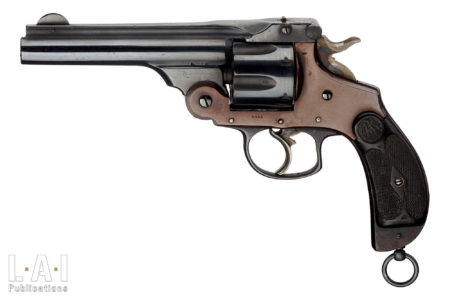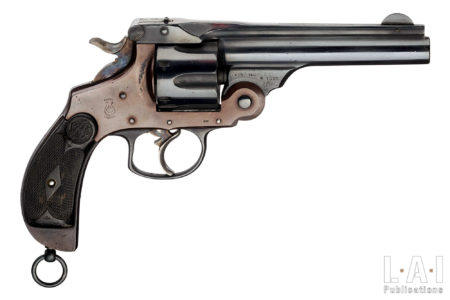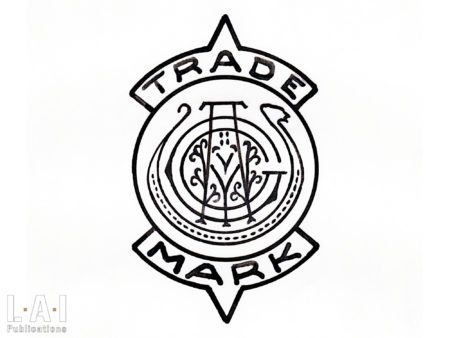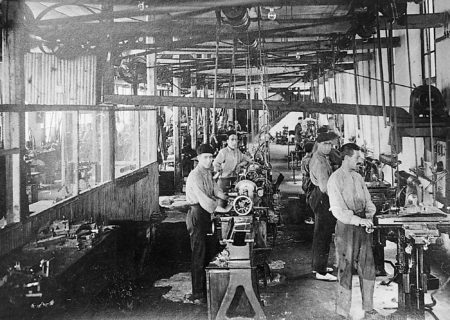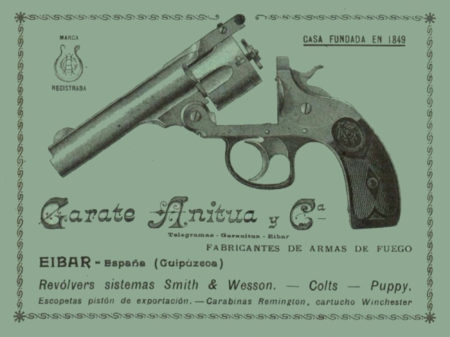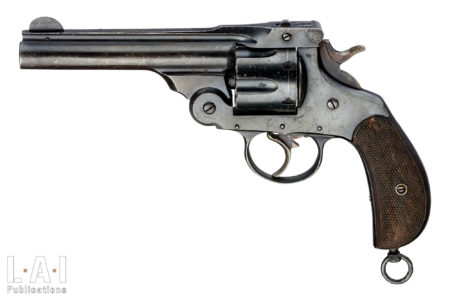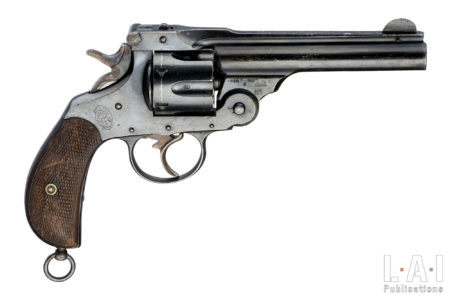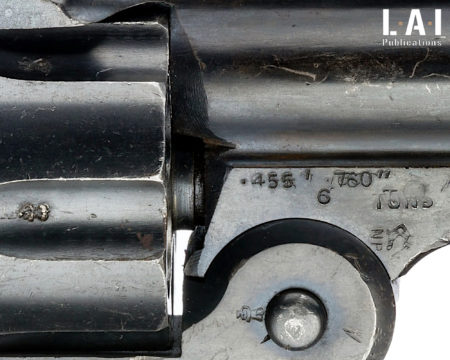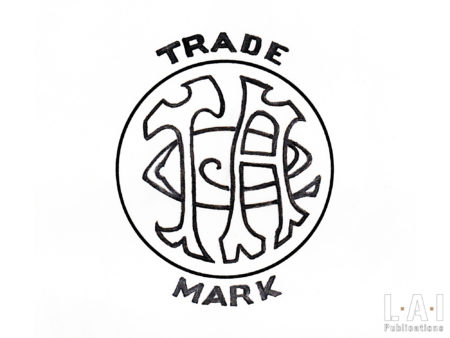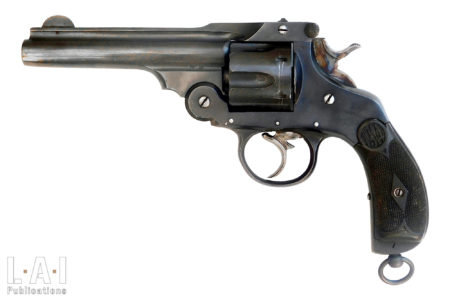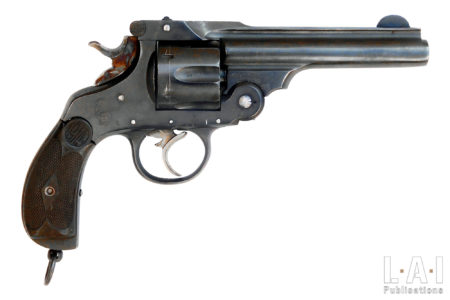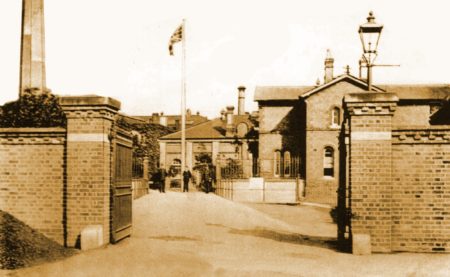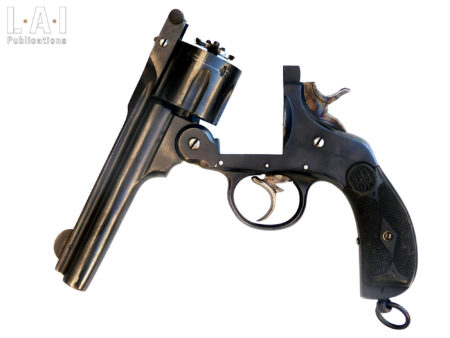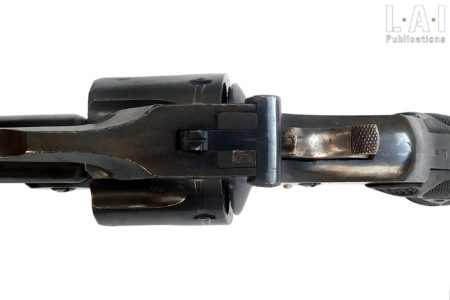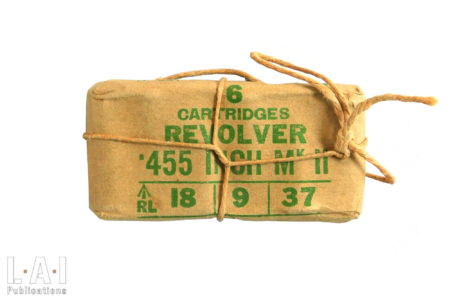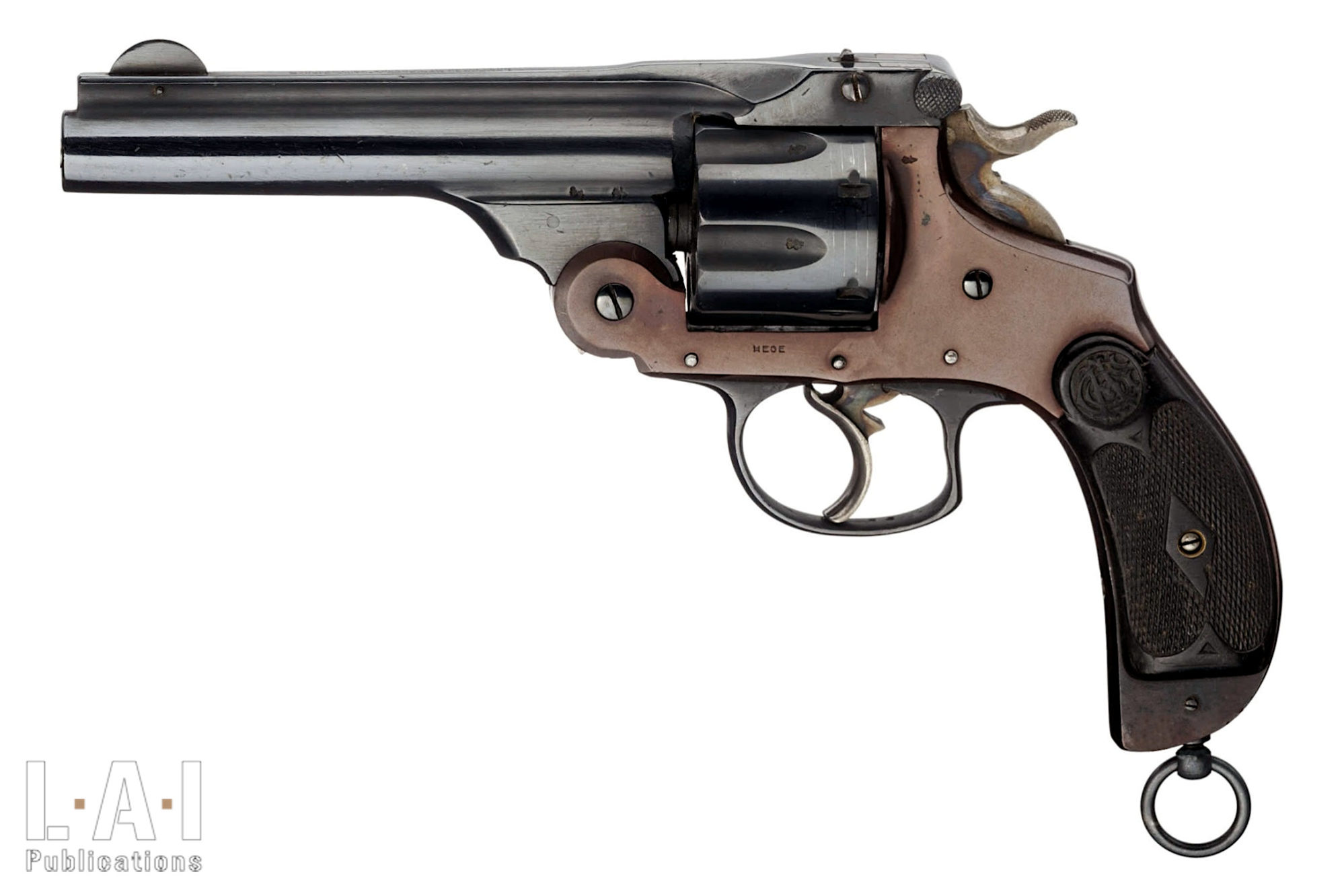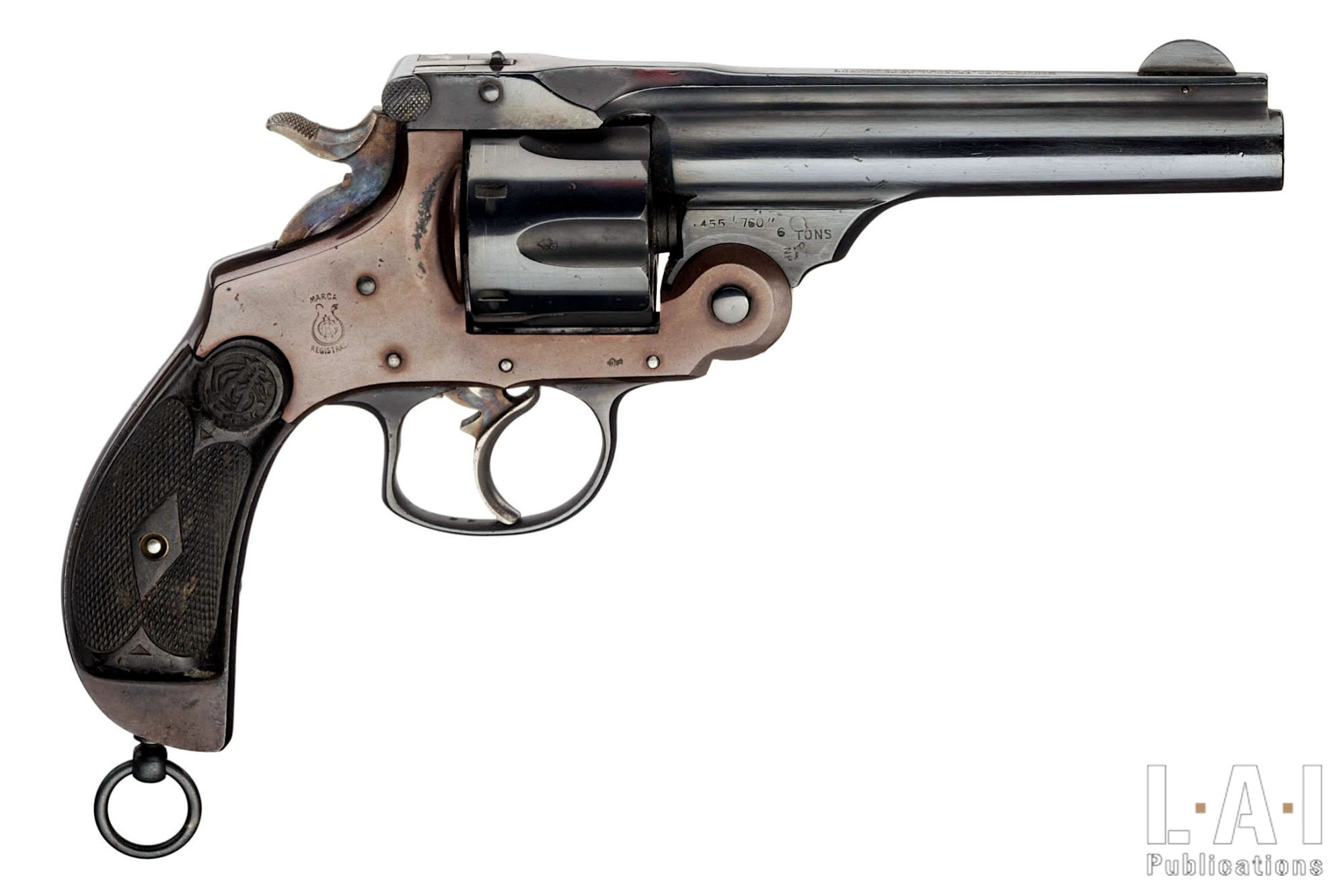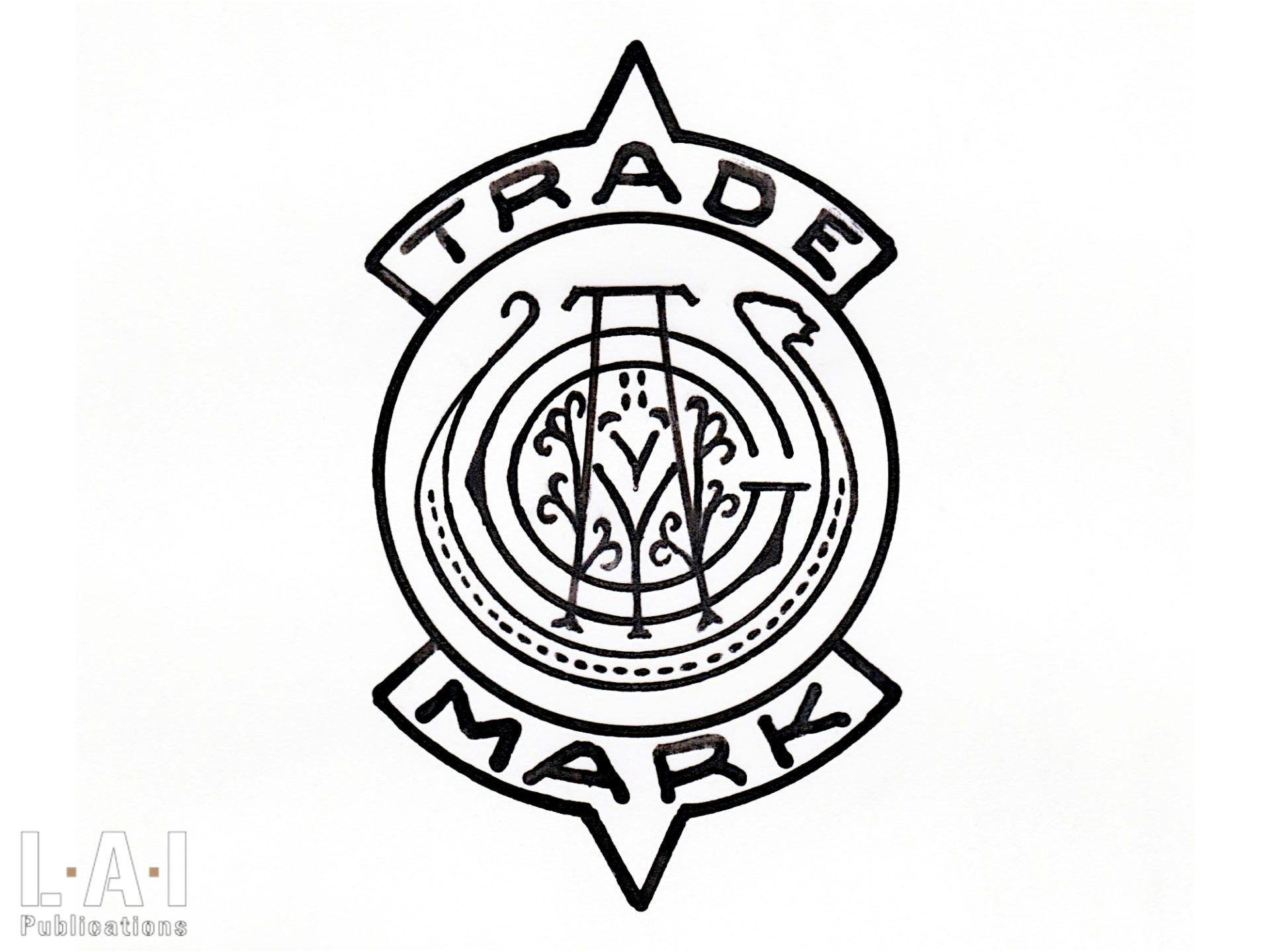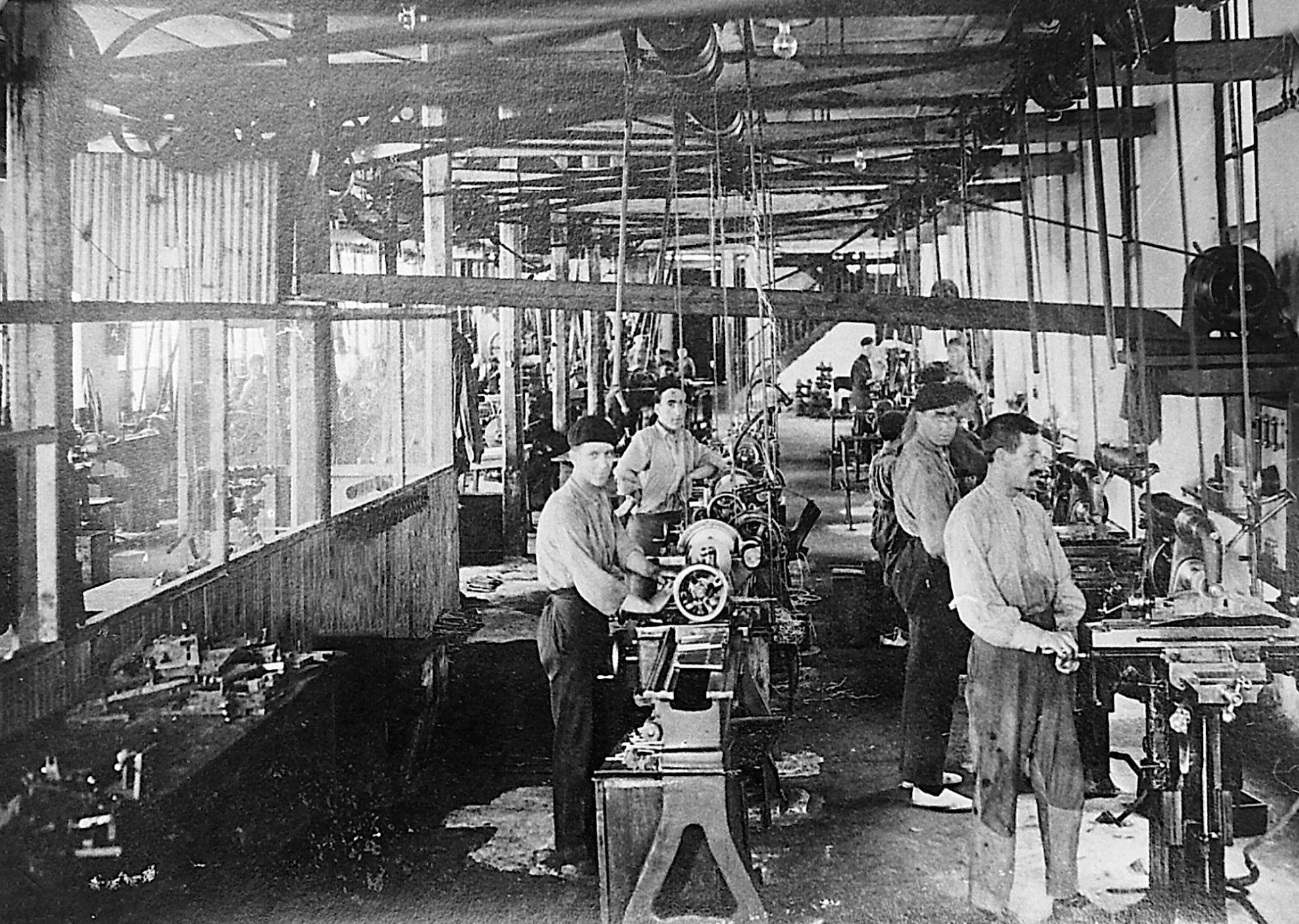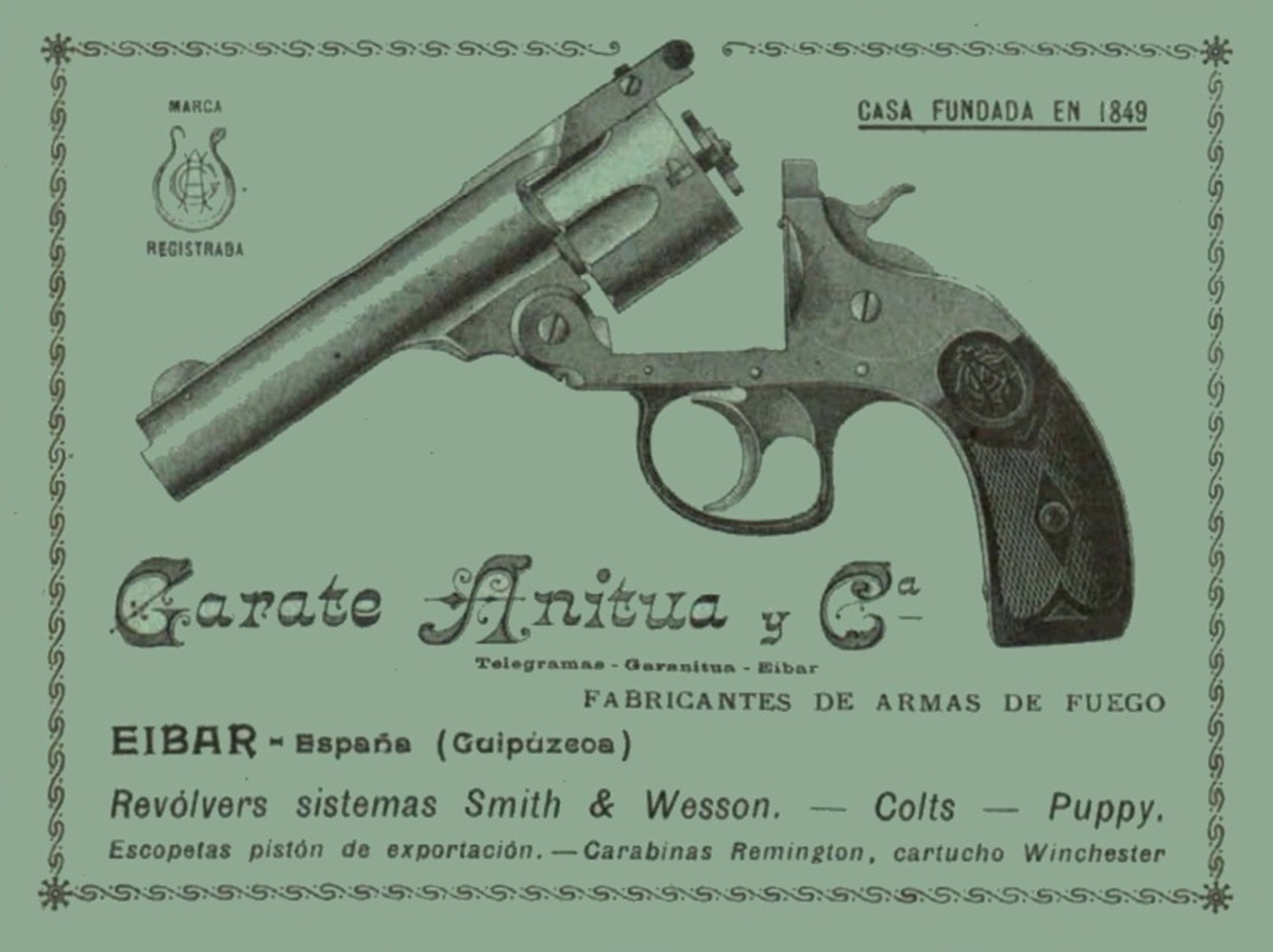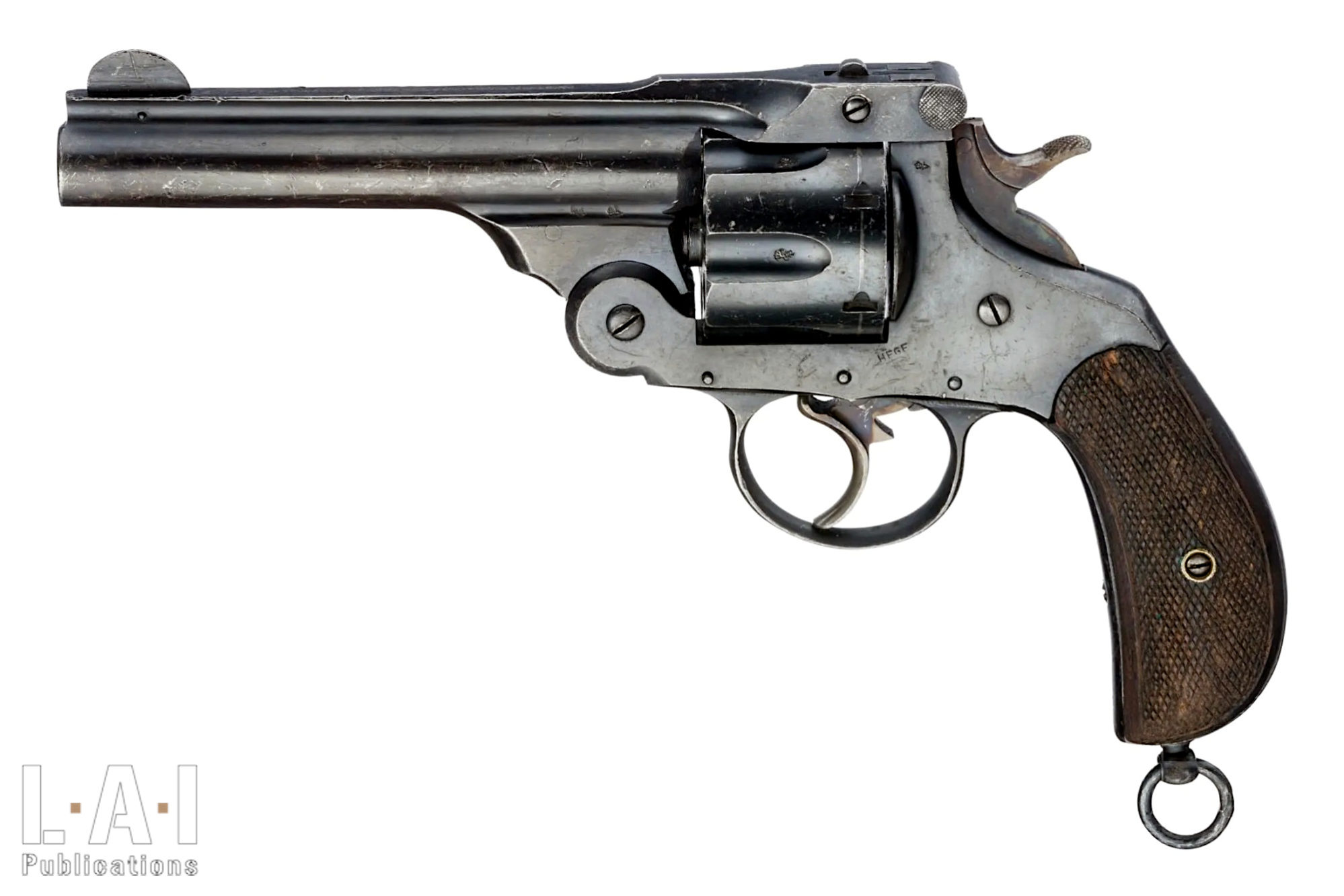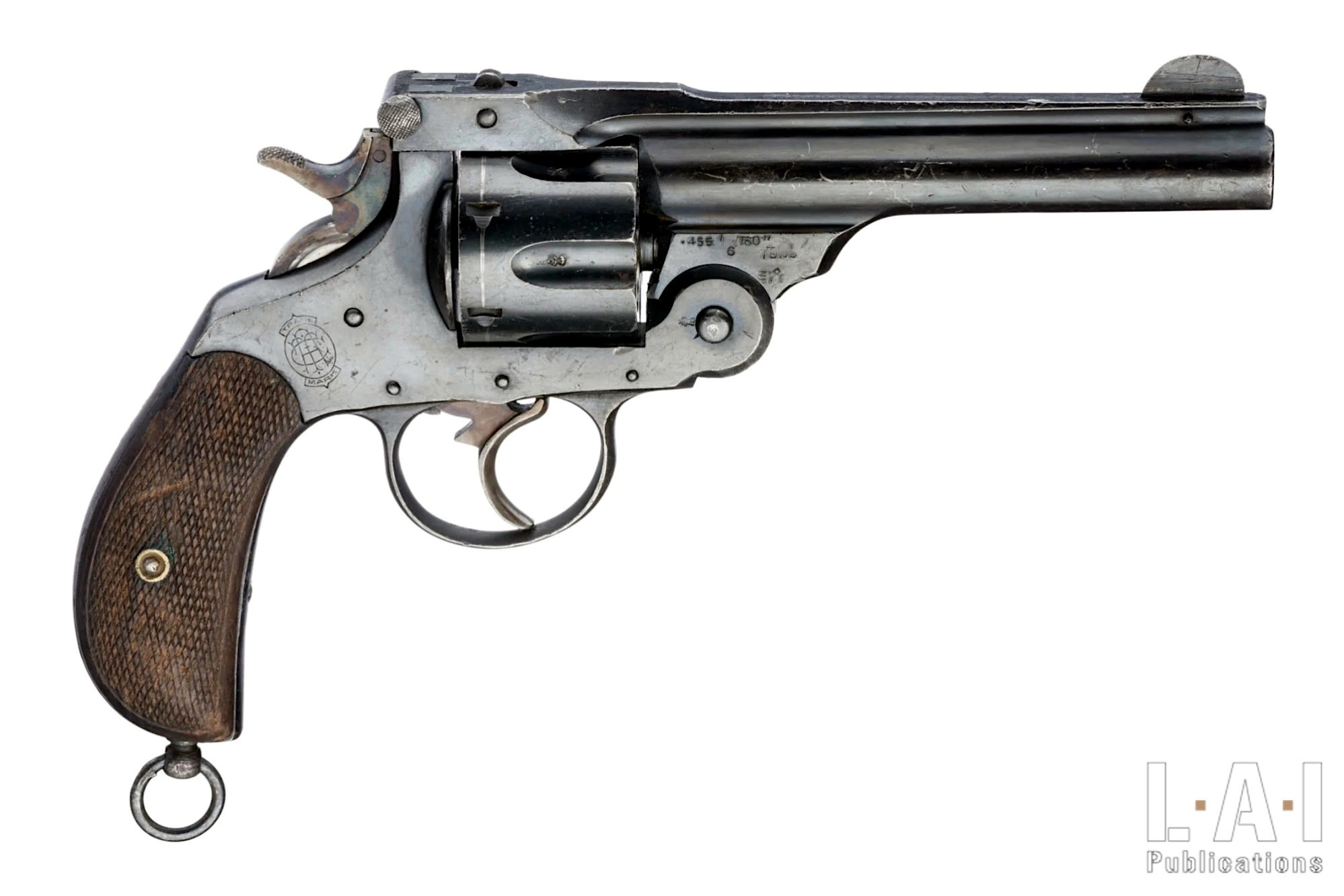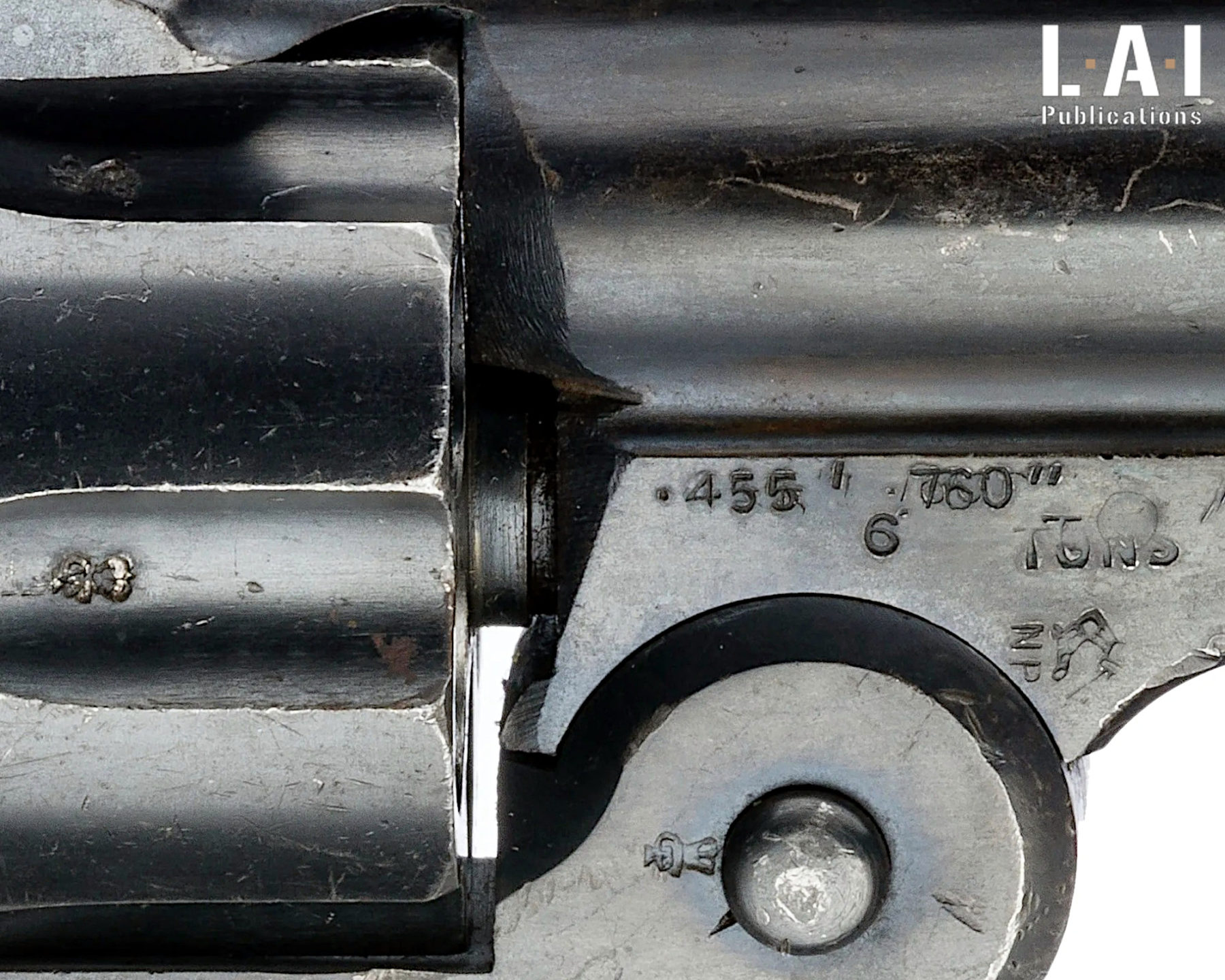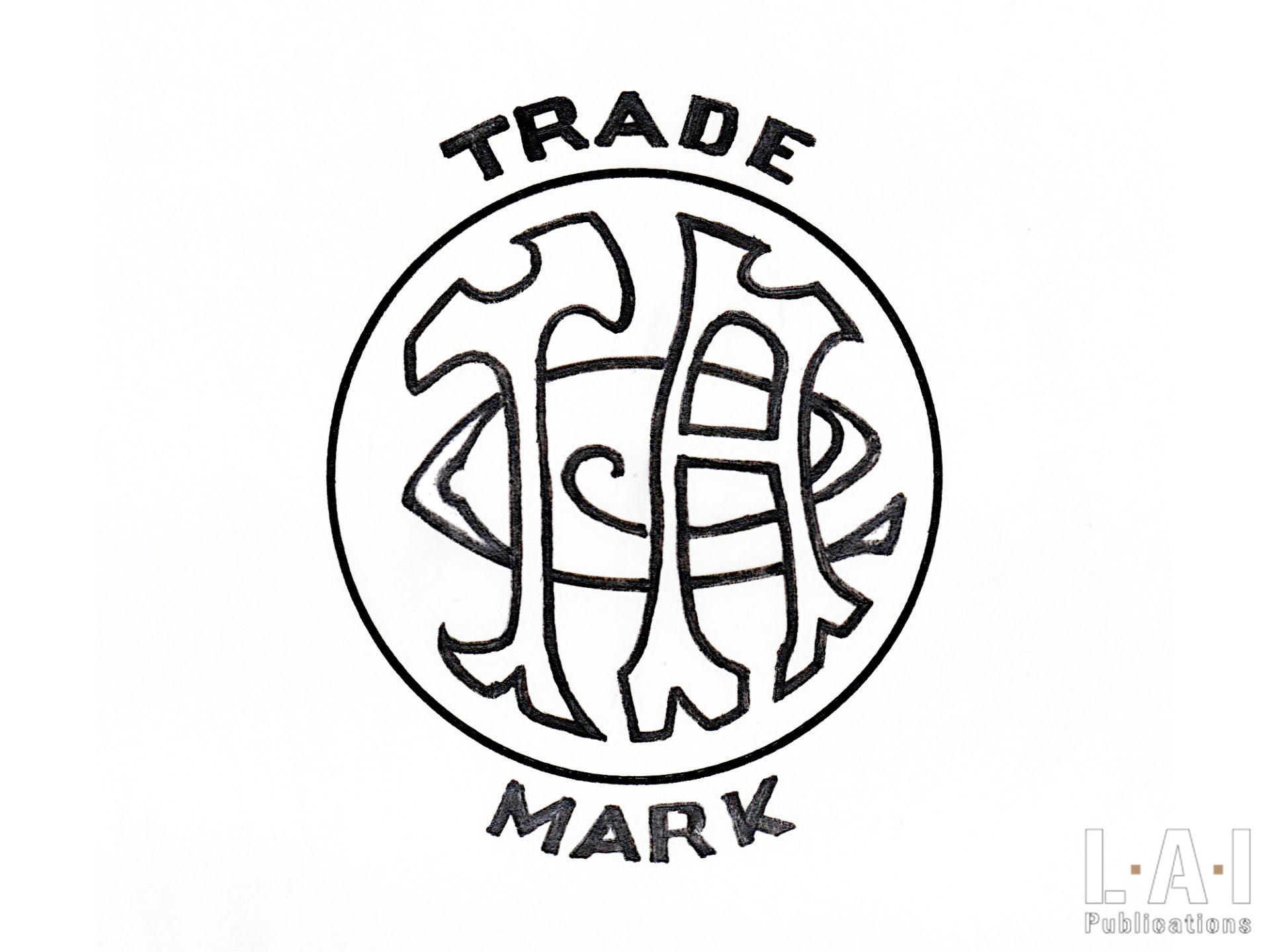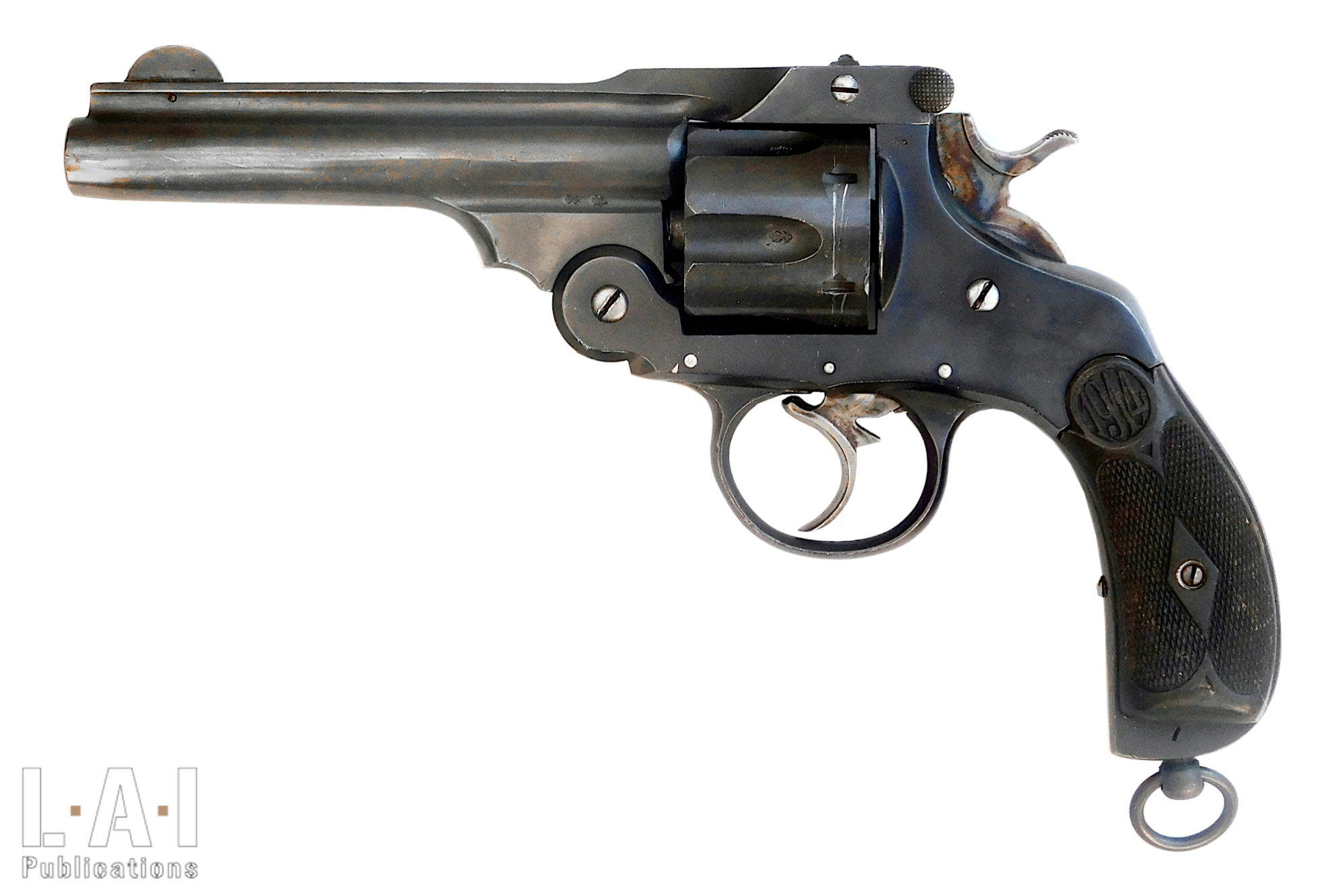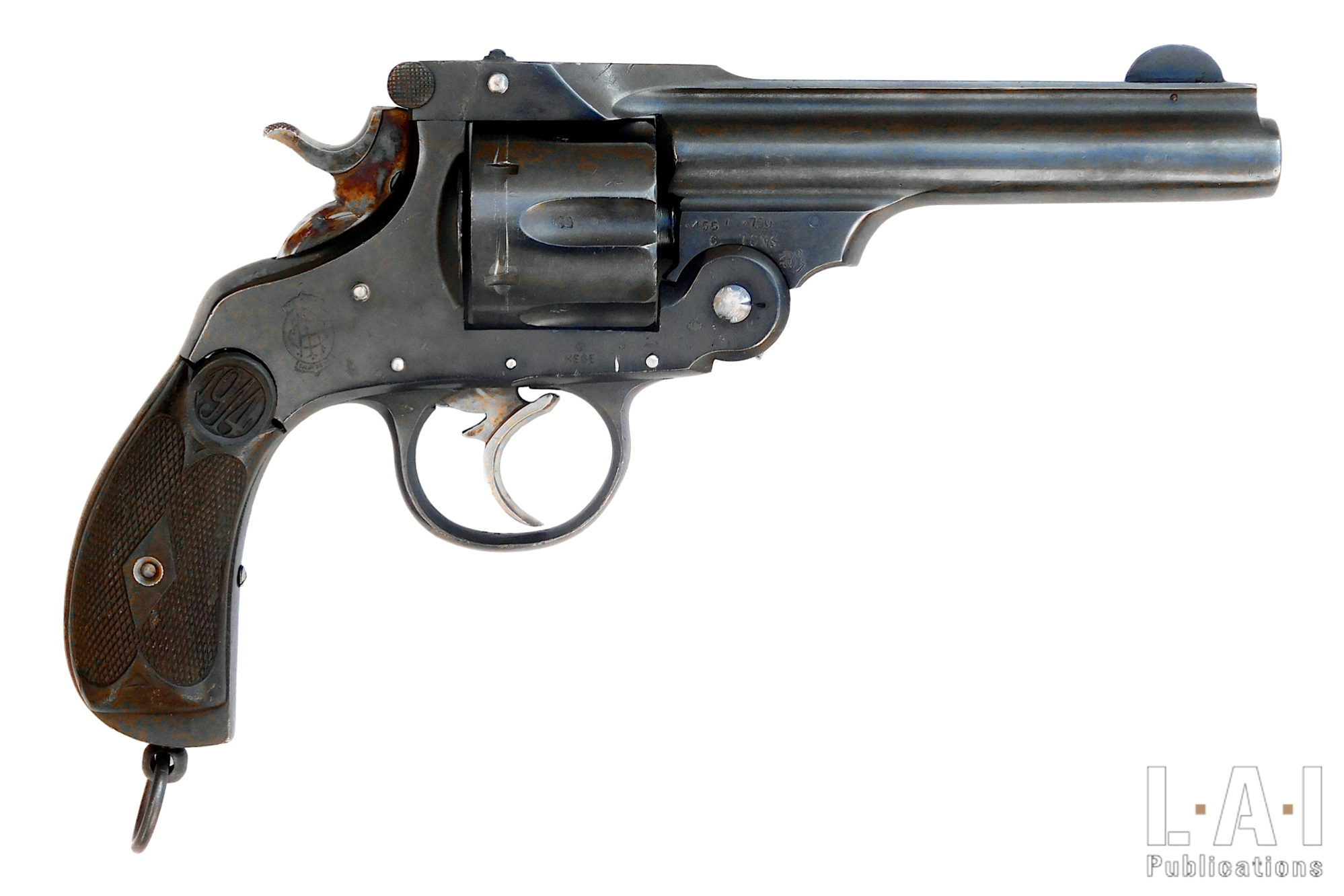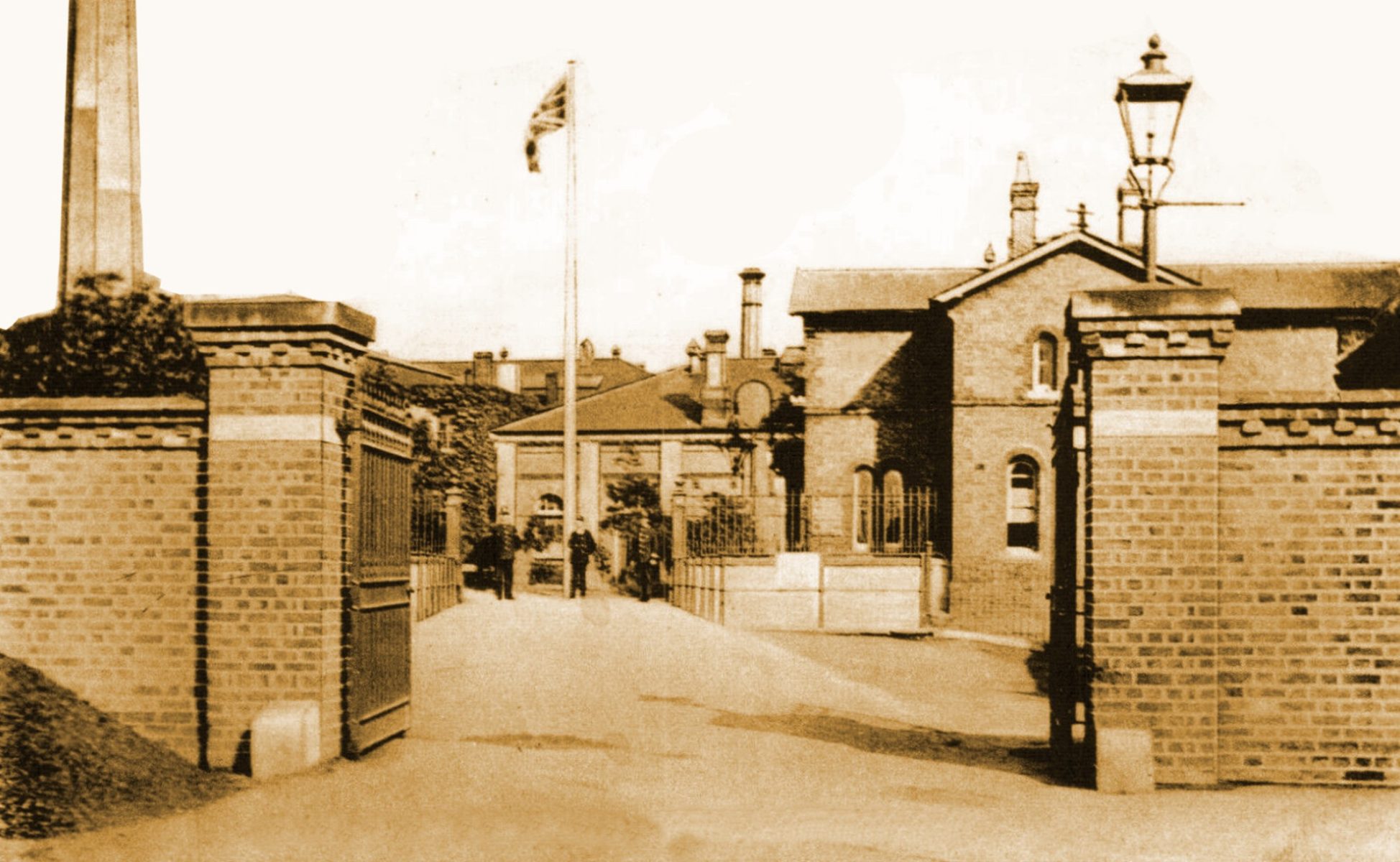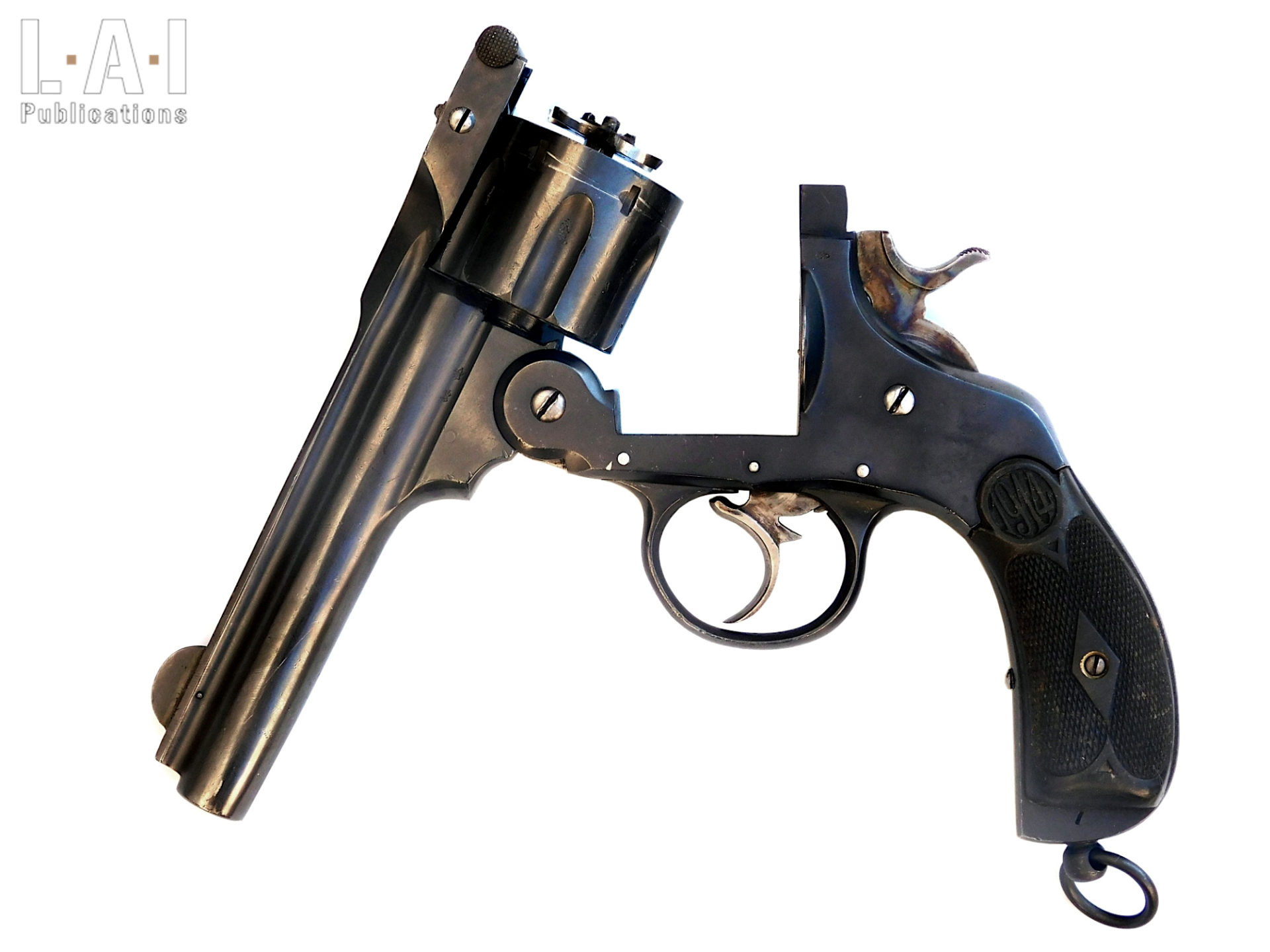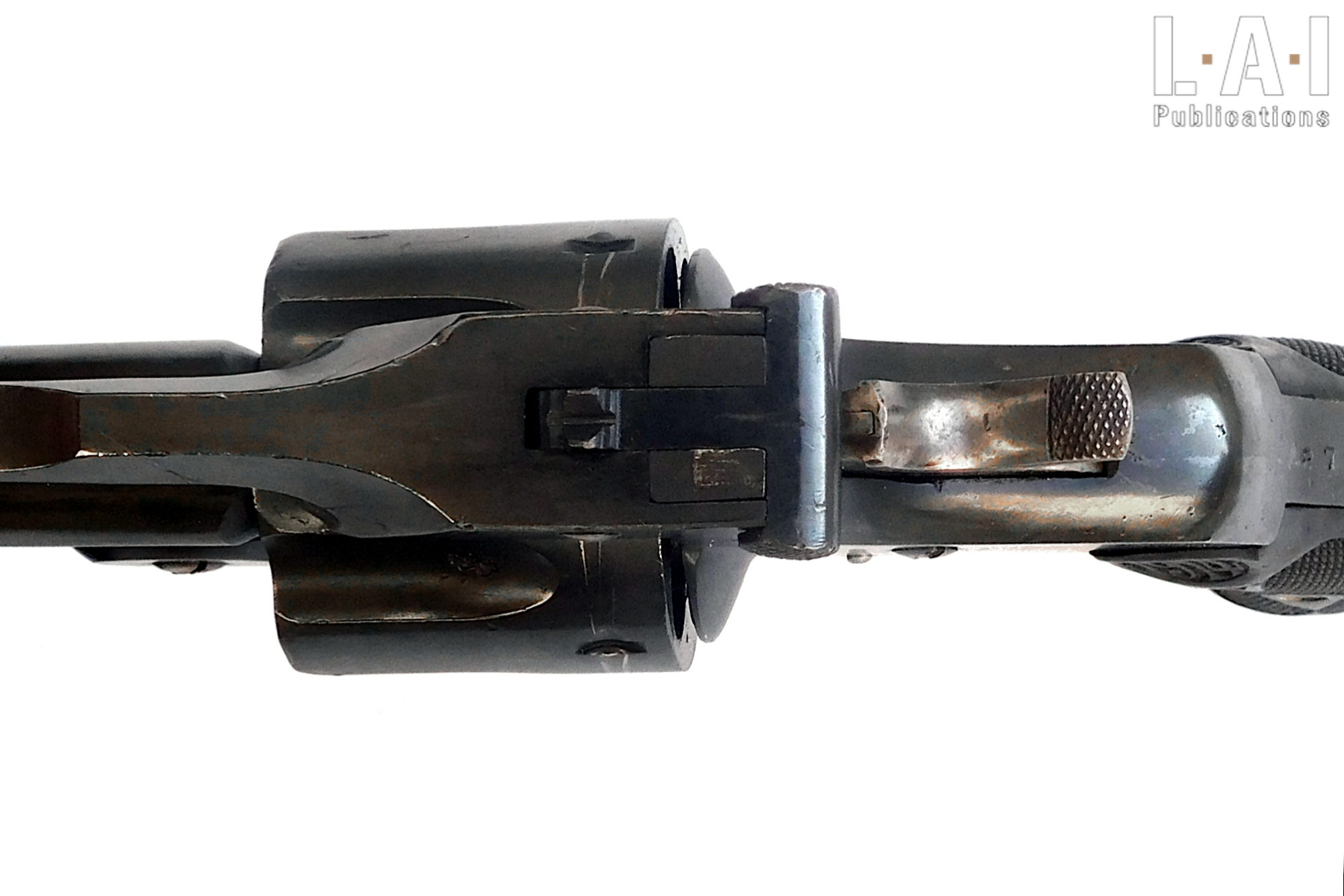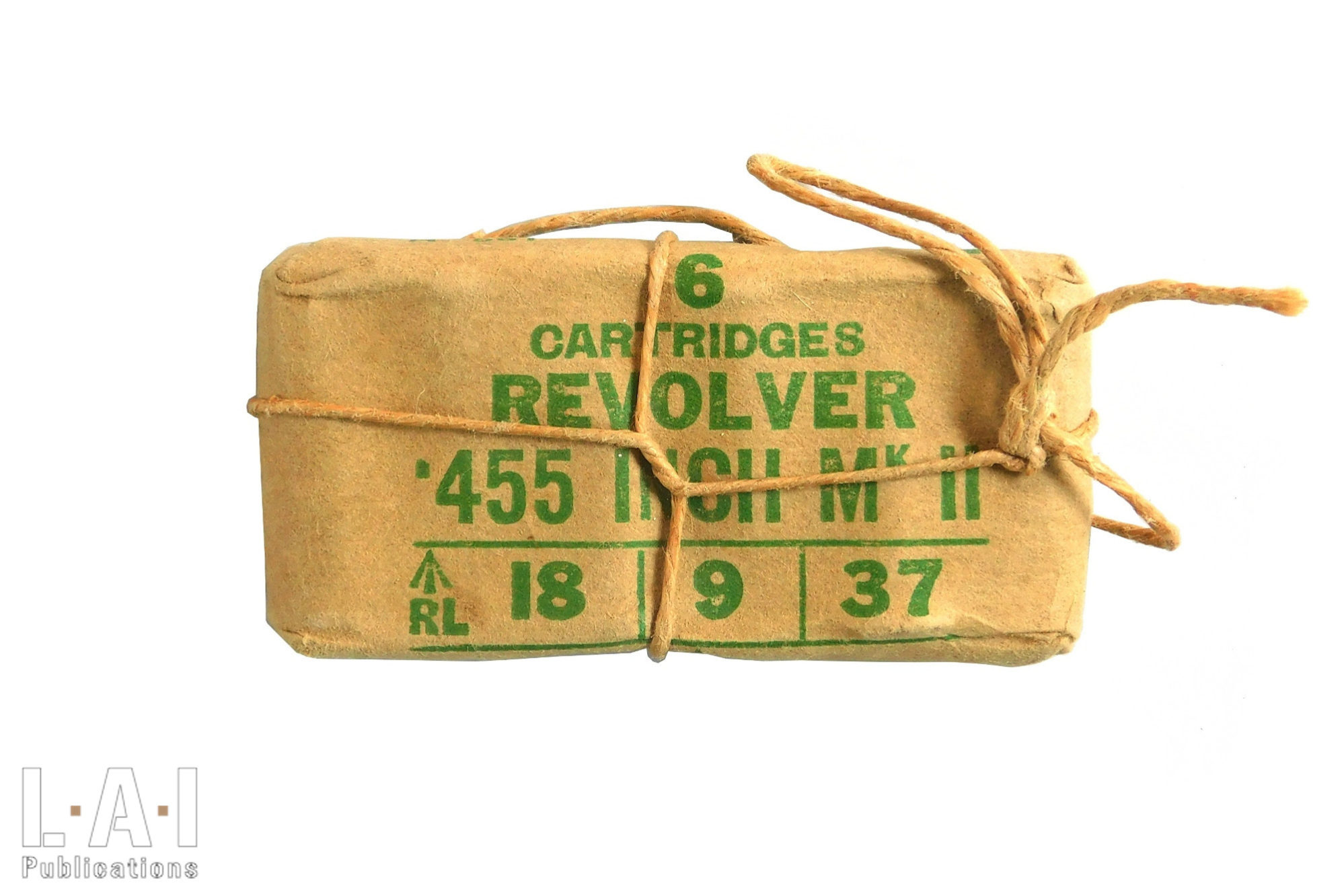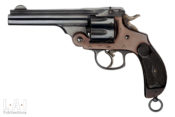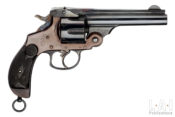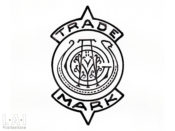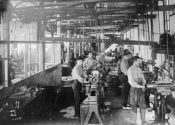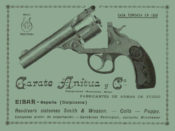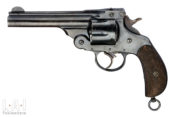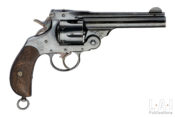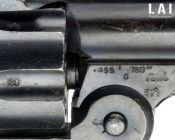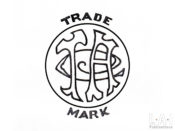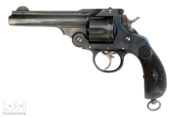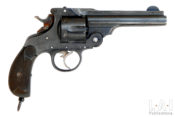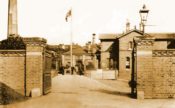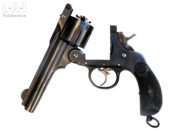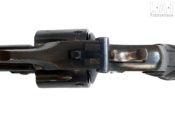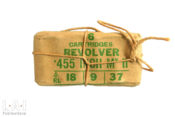Spanish Revolvers for England

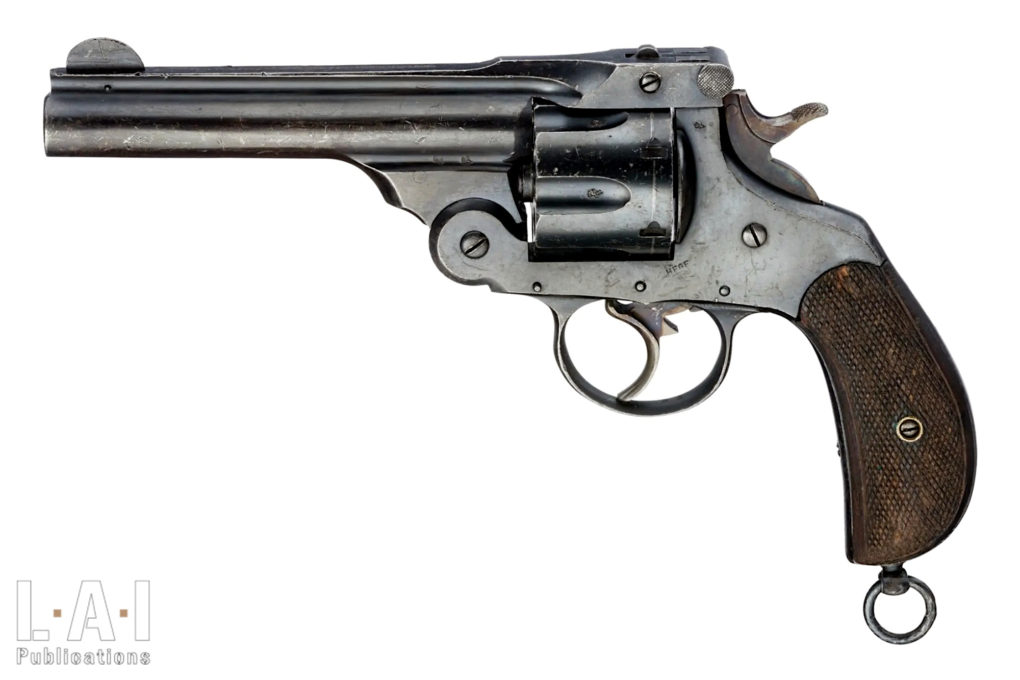
In 1915, Great Britain, caught in the turmoil of WWI, had to face the shortage of small arms that affected most belligerents. Handguns were sorely lacking and the British military, which still looked suspicious of semi-automatic pistols, first turned to the United States to buy sturdy revolvers, chambered in .455 caliber. The American firms Colt and Smith and Wesson supplied the British with tens of thousands of handguns. But the enormous needs required to replace losses, and to build up new units, forced the English to turn to Spain to complete their endowment.
At the origin of this particular contract are three large Spanish companies, united in Eibar, in a consortium led by the company Orbea Hermanos. Committed to Orbea, Garate, Anitua y Cia and Trocaola, Aranzabal y Cia, then constituted an important industrial group that counted in its ranks the best Spanish revolvers manufacturers. Specializing in the manufacture of Smith & Wesson revolvers for years, the manufacturers of Eibar had no trouble adapting one of their models to the .455 English service cartridge. Contact was therefore made between the British government and the Spanish manufacturers for the delivery of several tens of thousands of these weapons, according to very precise specifications. The order sent to Orbea on August 6th, 1915, provided for the delivery of 30,000 revolvers by the end of July 1916.
Garate, Anitua y Cia
The company Garate, Anitua y Cia d’Eibar was therefore one of the two firms, approved for the supply of “Old Pattern” revolvers (abbreviated OP) to the English. Created by Manuel Garate in the mid-nineteenth century, it was at the origin of the production of revolvers in Spain. As a worthy successor to his father, Crispin Garate set up in collaboration with Juan José Larranaga and José Francisco Anitua, the house Larranaga, Garate y Compania. The tragic end of Garate, who died during the construction of the blast furnaces of the factory, led to the dissolution of this company. Some time later, the company was reconstituted under the name Garate, Anitua y Compania. Solicited from all sides during the Great War, it provided thousands of revolvers to the Allies (including the “Cordero” revolver detailed in the article linked here); good quality weapons, marked with the “lyre” hallmark of the Eibar manufacturer.
Le « Pistol OP 5-inch barrel N°1 Mark I »
This weapon, built at Garate, Anitua y Cia, is one of the two types of revolvers delivered to Great Britain between 1915 and 1916. Adopted by imperial decree on November 8th, 1915, it corresponds in every way to the specifications drawn up by the English. A faithful copy of the Smith & Wesson D.A., this top-break revolver has a two-part frame, articulated around a large axis placed under the barrel rear-end. The upper part of the frame is built as one with the barrel. A five-inch barrel, with seven righthanded groove. The locking, classic on a weapon of this type, is provided by a T-shaped piece that carries the rear sight notch. A half-moon front sight blade is pinned at the top of the band that runs all along the barrel. The bird head handle is trimmed with commercial grips with the firm’s monogram, which leave the bottom of the handle clear. The base of this handle is equipped with a lanyard ring. 247 mm long and weighing 1020 grams, this double-action revolver is fully blued, except for the hammer and trigger which are case-hardened. The fluted cylinder is machined with six chambers intended for the .455 Webley service cartridge.
Markings
They are quite numerous and closely mix the manufacturer’s marks with the various hallmarks affixed by the British administration. The manufacturer’s name appears on the top band of the barrel, which reads:
MANUFACTURA ESPECIAL DE REVOLVERS
GARATE ANITUA Y Cia-EIBAR (ESPAÑA)
To the right of the frame is the trademark of the house of Garate, Anitua y Cia, the initials GA placed within a “lyre” surrounded by the mention “Marca Registrada”. The grips are crisscrossed with the initials “G A”. A receiving mark appears to the left of the handle busc. The caliber accompanied by various proof marks is stamped under the barrel. On the left of the frame, above the cylinder are two crisscrossed flags, hallmark of the Enfield arsenal.
TROCAOLA ARANZABAL AND CIA
Founded in 1875 by the brothers Hilario and José Antonio Aranzabal associated with Venancio Trocaola, the Trocaola y Aranzabal arms factory first specialized in the production of copies of Colt and Smith & Wesson revolvers. Very active at the beginning of the twentieth century, Trocaola y Aranzabal was the Eibar company that exports the most abroad. During the Great War, the company was solicited by representatives of several belligerents. Orders for its military revolvers, used by several foreign armies, reached nearly 200,000 copies of various models and calibers.
Le « Pistol OP 5-inch barrel N°2 Mark I”
This weapon is very close to the Garate revolver, Anitua y Cia which was delivered to the British between 1915 and 1916. Manufactured by Trocaola, Aranzabal y Cia, it was adopted at the same time under the name “Pistol OP N°2 MKI”. There are few differences between the two weapons except for the markings and squared walnut grips that dressed the entire handle on the Trocaola, Aranzabal y Cia revolver.
Markings
Here again they are numerous and mix the manufacturer’s brands with the hallmarks and markings of the British administration. The manufacturer’s name appears on the top band of the barrel:
FA TROCAOLA ARANZABAL Y Cia EIBAR (ESPAÑA)
To the right of the frame is the trademark, a monogram superimposed on the letters TAC framed by the words “Trade Mark”. Wooden grips are sometimes replaced by ones borrowed from commercial weapons stockpiles. In this case they usually bear the 1914 vintage. The control hallmarks and the mention of the caliber appear again on the right-side upper frame, in front of the cylinder.
Ammunition
Adopted by England in 1897, under the name .455 Mk II, the British service cartridge used during WWI followed the Mk I cordite, adopted in 1891 and loaded for the first time with smokeless powder in 1894. The .455 Webley Mk II had varying fortunes: it was abandoned for the first time in 1898, in favor of a cylindrical hollow point bullet cartridge (therefore expansive), the .455 Mk III. But a year later (1899), the first Hague Conference banned the use of cartridges using expansive bullets, therefore the Mk II was reintroduced in 1900. It disappeared again with the adoption of the Mk IV with cylindrical flat head bullet in December 1912. This new munition, supposedly compliant with the decisions of the Hague Conference, would be replaced very ephemerally by a similar munition, the Mk V, but whose bullet would be made of harder lead alloy. Finally, the .455 Mk II reappeared in November 1914. This cartridge, used until 1939, consists of a rimmedShape of the head of an ammunition which comprises a return ... More straight case, brass, Berdan priming. 18.9 mm long (the Mk I’s was 22.5 mm long), the case is capped by a cylindrical-ogival lead bullet, with a real diameter of 11.52 mm. Propelled by 0.48 grams of Cordite, the bullet reaches a speed of 183 m/s.
Balance sheet
In one year, the Spanish consortium barely managed to supply 29,558 .455 caliber revolvers to the British Army. But the percentage of weapons refused during checks at the Enfield arsenal was very high. It was by mail that the Spanish manufacturers were informed, on May 19th, 1916, that none of their revolvers would be accepted after July 31st. Delivered weapons, which have not been inspected by that date, would only be accepted if they passed the inspection in the first intention. No compensation would be allowed.
The difficulties encountered in this case by the Spanish gunsmiths were essentially linked to the notion of “war production” which differs according to the points of view. For the Spanish, which produced correct and good quality weapons, some variations in tolerances in the manufacture were quite acceptable. The English demanded from their suppliers a perfect quality, worthy of the best civil and military revolvers of the time…
Surprised by so many requirements, in this period when most buyers favored quantity over quality, Eibar manufacturers were trying to limit the damage by strengthening controls within their production tool. But despite all the care given to these weapons; in March 1916 there were 6,000 revolvers left in Great Britain that the army did not want.
The Spanish companies then withdrew these weapons from England, to resell them to less demanding buyers. Some revolvers left for Italy, others were traded on the English civilian market, intended for the officers of His Most Gracious Majesty. The Orbea frame, at the origin of the construction of this weapon for the British did not participate in the English contract. Its production of top-break revolvers was oriented towards Italy, to which it delivered identical revolvers, chambered in 10.35 mm, via the Italian firms Tettoni and Solari…
A few years after the end of the war, on November 15th, 1921, England decommissioned the Spanish “Old Pattern” revolvers. Declared obsolete they would be withdrawn from service.
Text and picture by Jean-Pierre Bastié
This is free access work: the only way to support us is to share this content and subscribe. In addition to a full access to our production, subscription is a wonderful way to support our approach, from enthusiasts to enthusiasts!
SOURCES:
“Pistolets et revolvers basques 1900-2000 », by Jean-Pierre Bastié and Daniel Casanova, éditions Mémorabilia 2021


